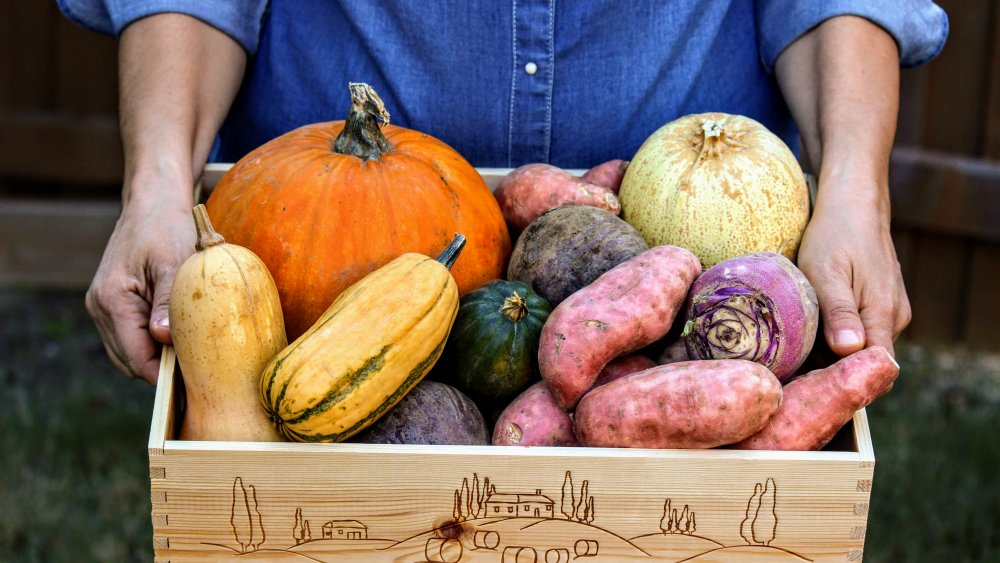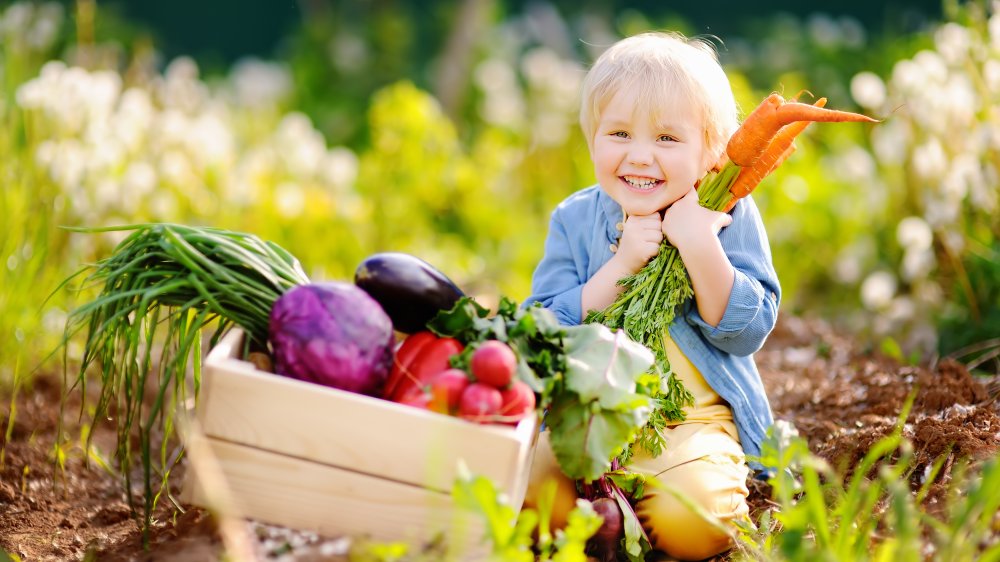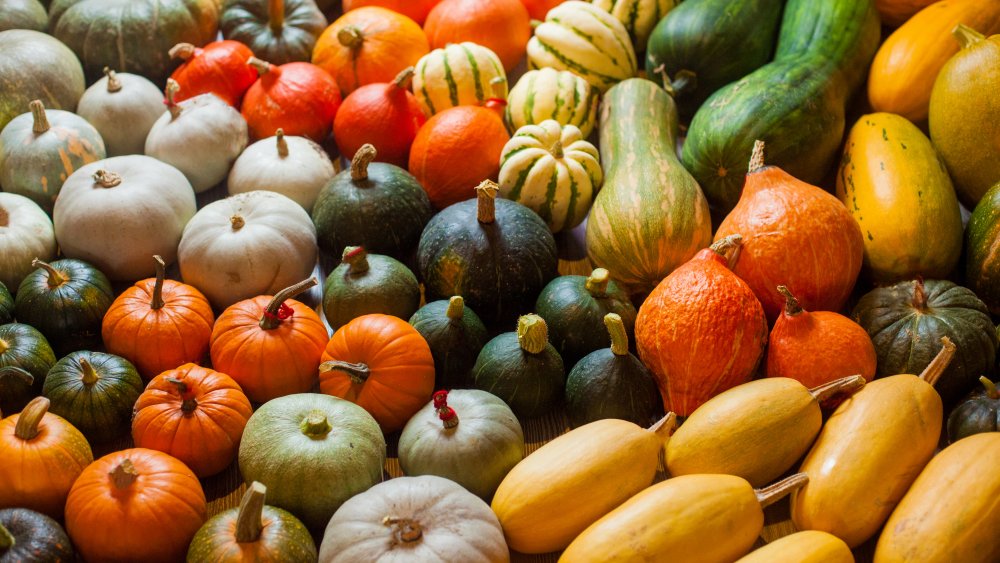Here's What You Should Know Before Signing Up For A CSA Box
You've heard the buzz about the farm-to-table movement and buying local. And you know eating more fruits and vegetables would be good for you. So you're considering a radical change to your shopping habits: joining a CSA so you can get fresh produce and maybe some eggs, milk, or honey directly from a nearby farm. You'll be cutting out the grocery-store middleman, and you'll know exactly where your food is coming from. (Granted, the source of the ingredients in your store-bought Snickers bar or Doritos will remain a mystery.) Unless the farmer is going to invite you into his home for dinner, it doesn't get much more farm-to-table than that (via The Spruce Eats).
But you have questions. How much does it cost to join a CSA? How much choice do I have in what I get? What if the farmer has a bad crop? Do I even know what "CSA" stands for? After reading this, you'll hopefully have a better idea of whether supporting local farms through a CSA is right for you. Because "support" is exactly what you'll be doing – it's right there in the name. CSA stands for "community-supported agriculture," and joining a CSA is not just good for you. It's good for the farmer, too.
CSA members pay up front for a whole season of produce
The basic concept of a CSA is this: Pay a farmer upfront, before growing season, for the bounty you will enjoy come harvest time (via Food Revolution Network). What comes in your weekly CSA box depends on what the farmer chooses to grow and the quality of the crop. In a good year, your box may overflow. If the crop is lean, your box might not meet your expectations. As for what your local farmers have to offer exactly, the internet has plenty of information about that. You can research farms in your area on Local Harvest. In some cases, CSA members can go to the farm or a farmers market and fill their own box. Some farms even have "you-pick" CSAs.
In New York City, upfront costs range from $300 to $400, which might discourage some and be a true financial barrier for others. But, if the farm you are considering has a five-month harvesting season, that membership fee breaks down to $12 to $18 per week – not a bad deal for a week's worth of fresh, locally grown produce. Keep in mind that prices for CSA shares can vary, depending on the farm and the size of your family. The CSA experts at the Food Network found membership fees as high as $1,000 a year.
CSAs are convenient, but they're also a commitment
You might be sold on the CSA concept because it's convenient. For a reasonable price, you get a wide range of farm products delivered to your door, or maybe boxed up for you to pick up at a designated location. But CSA membership is also a commitment. Those boxes will keep coming, week after week, and typically you won't know what's in them until they arrive. You need to be ready to get creative with kohlrabi, beets, and varieties of winter squash you may have never heard of. It might help if you feel strongly about breaking free of the national food-supply chain and supporting local farmers. It also might help if you split your CSA share with a friend, or you have a family of adventurous eaters willing to share the cooking responsibilities.
Also consider this: Unless you're already getting boxloads of fresh vegetables with every Costco or Walmart run (which some would say is ill-advised), you are bound to eat healthier if you join a CSA. And one thing's for certain: Join a CSA, and your relationship with food will change dramatically.


